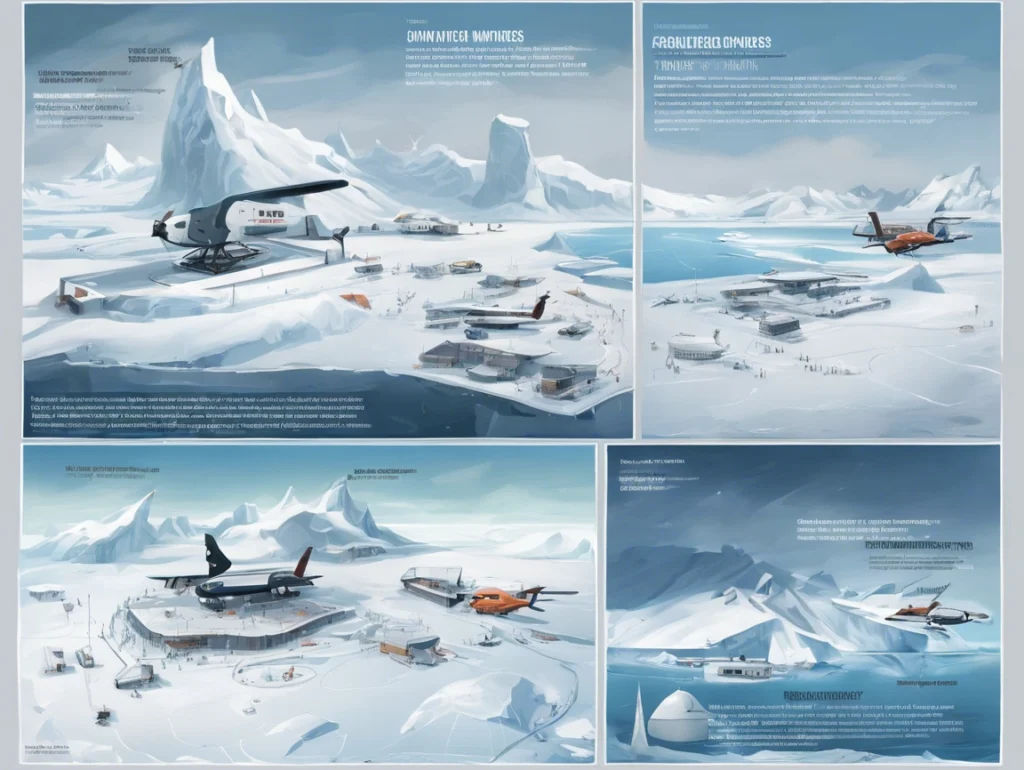-
Best 20 Airports in the Barren Wasteland
A frozen, massive scenery with contemporary airport facilities, sleek icy plains, and exotic climatic conditions offers unique experiences. Below is a detailed overview of the 20 best airports found in these harsh environments.
1. McMurdo Station Airfield (MCM)
- History: Founded in 1956, it is the largest research station in Antarctica and belongs to the United States.
- Services: Mainly serves military and logistical aviation; limited passenger amenities.
- Why Exceptional: Provides accessibility to multiple areas in Antarctica and accommodates various aircraft types, such as LC-130 Hercules.
- Security: Protected by the U.S. Antarctic Program with very limited access.
2. Amundsen-Scott South Pole Station (NZSP)
- History: Established in 1956 at the geographic South Pole, known for astrophysics and climatology research.
- Services: Features a runway for ski-equipped airplanes, primarily used in summer.
- Why Exceptional: Southernmost populated area, ideal for groundbreaking scientific studies.
- Security: Strictly controlled access for authorized personnel.
3. Rothera Research Station (ROH)
- History: Founded in 1975, operated by the British Antarctic Survey for extensive scientific research.
- Services: Supports large airplanes; limited passenger services.
- Why Exceptional: Focuses on glaciological and marine biological research.
- Security: Restricted access and monitored personnel.
4. Palmer Station (PS)
- History: Established in 1965, the only American year-round station on the Antarctic Peninsula.
- Services: Small runway for transport and supply, especially in summer.
- Why Exceptional: Central to climate change and marine biology studies due to proximity to Level 4 ecosystems.
- Security: High environmental and researcher safety measures.
5. Union Glacier Camp (UGC)
- History: Founded in 2010, designed for tourists and scientists.
- Services: Blue-ice runway and minimal provisions for adventure tourism.
- Why Exceptional: Offers activities like mountain climbing and wildlife watching.
- Security: Comprehensive safety measures for visitors.
6. King George Island Airstrip (SGK)
- History: In use since 1980, supports multiple international research stations.
- Services: Connects South America and Antarctica for research and supply purposes.
- Why Exceptional: Key gateway to the Antarctic Peninsula for researchers.
- Security: Focused on aircraft operations and research safety.
7. Casey Station (CASEY)
- History: Established in 1965, an Australian research station.
- Services: Runway supports resupply flights and scientific missions.
- Why Exceptional: Active in environmental monitoring and climate change research.
- Security: High restrictions for environmental preservation.
8. Dumont d’Urville Station (DUM)
- History: Established in 1956, a French coastal research facility.
- Services: Small airstrip mainly for resupply.
- Why Exceptional: Key contributor to climate change research.
- Security: Controlled access for safety and environmental integrity.
9. Syowa Station (SYW)
- History: Japanese station founded in 1957 for scientific research.
- Services: Airstrip supports transportation of equipment and personnel.
- Why Exceptional: Conducts meteorology and glaciology research.
- Security: Strict safety measures for researchers and visitors.
10. Neumayer III Station (NEM)
- History: German station established in 2009, focused on climate research.
- Services: Runway supports transportation for research.
- Why Exceptional: Dedicated to atmospheric and glaciological investigations.
- Security: Restricted access to ensure research and environmental safety.
11. Vostok Station (VOS)
- History: Founded in 1957, located at the largest subglacial lake.
- Services: Supports aircraft for scientific research.
- Why Exceptional: Significant contributions to global warming studies.
- Security: High confidentiality and research integrity.
12. Novolazarevskaya Station (NOV)
- History: Russian station established in 1961 for scientific support.
- Services: Airstrip facilitates supply and research flights.
- Why Exceptional: Advances Russian scientific efforts in Antarctica.
- Security: Robust measures for environmental and personnel safety.
13. Mawson Station (MAW)
- History: Established in 1954, Australia’s first Antarctic station.
- Services: Runway for research and supply purposes.
- Why Exceptional: Known for historical and ongoing scientific activities.
- Security: Pollution control and restricted access.
14. Scott Base (AKL)
- History: New Zealand station founded in 1957.
- Services: Limited aviation capabilities for logistics.
- Why Exceptional: Offers unique perspectives on Antarctic science.
- Security: Protects personnel and environment.
15. Halley VI Research Station (HAL)
- History: Built in 2012, a UK research center for climate change.
- Services: Airstrip supports research flights.
- Why Exceptional: Explores Antarctica’s role in global climate systems.
- Security: Controlled access to maintain research integrity.
16. San Martín Base (SAB)
- History: Established in 1904, an Argentine research hub.
- Services: Paved runway supports aircraft operations.
- Why Exceptional: Focused on geophysical studies.
- Security: Stringent measures for research and personnel safety.
17. Base Esperanza (ESP)
- History: Argentine base established in 1952, located in Elizabeth Dean Province.
- Services: Runway for logistics and research flights.
- Why Exceptional: Gateway to the Antarctic Peninsula for research.
- Security: Access is permission-based for safety and environmental conservation.
18. Bellingshausen Station (BEL)
- History: Russian station established in 1968 for Antarctic exploration.
- Services: Airstrip for transport and supply.
- Why Exceptional: Noted for biological and ecological contributions.
- Security: Security measures protect researchers and surroundings.
19. González Videla Station (GV)
- History: Chilean station founded in 1960 on the Antarctic Peninsula.
- Services: Airstrip supports logistics.
- Why Exceptional: Focuses on oceanography and meteorology.
- Security: Controlled access ensures safety and environmental measures.
20. Friedrichshafen Station (FST)
- History: German station launched in 1984 for scientific programs.
- Services: Runway supports logistics and research purposes.
- Why Exceptional: Enhances understanding of Antarctic ecosystems.
- Security: Safe operations with environmental precautions.

